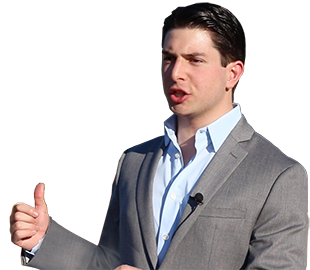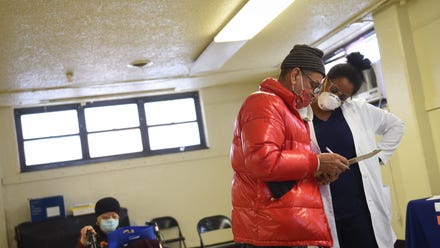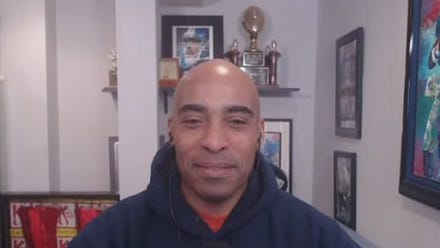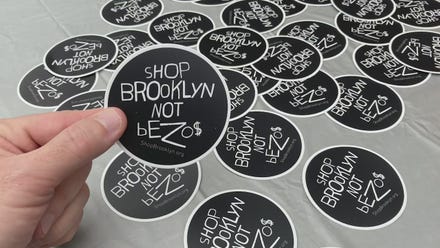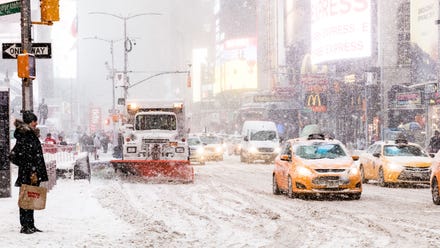
-
State of Black New York: The Racial Divide in Health Care and Education
Post Views: 737By Lynda Lopez, Marla Diamond and Steve Burns, WCBS Newsradio 880
NEW YORK (WCBS 880) — Over the next three weeks, WCBS Newsradio 880 is going to be spending time digging into a comprehensive report released by the New York Urban League titled, “The State of Black New York.”
We at WCBS 880 and Entercom New York are pleased to partner with the New York Urban League to shine the spotlight on issues of inequity in our community in important areas like health care, education, the digital divide, social justice, the economy, and civic engagement.
https://omny.fm/shows/880-weekly-rewind/special-report-the-state-of-black-new-yorkArva Rice, President and CEO of the New York Urban League, said the organization utilized data from Robin Hood & Columbia University’s Poverty and Early Childhood Poverty Trackers and also worked with United Way and the New York Women’s Foundation to provide statistical information on how African Americans are faring in comparison to their White counterparts.
“It’s really important for us to release the ‘State of Black New York’ report this year,” Rice said. “Our national office releases the ‘State of Black America’ on an annual basis and we had not released the ‘State of Black New York’ in over 10 years. In conjunction with our centennial, we wanted to be able to have a clearer baseline of how African Americans were doing in several key areas.”
The report not only lays out issue and statistics, it also includes actionable steps to facilitate change.
“It is important for us to shine the light on inequality, but to also provide some concrete strategies and policy suggestions on how to close those disparities and close those gaps,” Rice said.
As we tackle the report, this week reporters Marla Diamond and Steve Burns focus on health and education.
THE RACIAL DIVIDE IN HEALTH CARE
According to the New York Urban League report, one in four Black adults in New York City faced a health problem in 2018.
Today, they are twice as likely to die from COVID-19 than White people — making up 28% of deaths from the virus despite being only 22% of the city’s population.
Elisabeth Benjamin, Vice President of Health Initiatives at the Community Service Society, said this is the result of the state’s 30-year pro-market agenda.
“This is what structural racism looks like in the health care field. So in the 90s, we eliminated any semblance of regional health planning and centralized it up in Albany with a committee controlled by private and voluntary hospitals,” Benjamin said. “Although charities in name often do not act in very charitable ways toward their patients.”
Reimbursement rates were deregulated, allowing the most powerful hospital systems to get stronger, pushing out smaller community hospitals serving poor Black neighborhoods. The health care burden was pushed onto the city’s hospital system, which strained under the weight of the pandemic.
“So that’s why you see the New York Times and many, many articles about what was going on in Elmhurst, which was sort of the last hospital standing in Queens, versus what was going on in sort of well-heeled Manhattan hospitals,” Benjamin said.
The COVID crisis has revealed layers of inequities that The Rev. Calvin Butts sees firsthand at the Abyssinian Baptist Church in Harlem.
“The virus becomes a problem because cancer is still a problem; the virus becomes a problem because heart disease is still a problem; the virus becomes a problem because diabetes is still a problem. So this really digs deep into an underlying reality that we have not been getting adequate health care in our communities,” Butts said. “And we could go even deeper — the lack of doctors, the lack of nurses, the lack of information.”
The church was the first house of worship in the state to offer the COVID-19 vaccine.
“And we have found that by having the site for vaccinations in the community, in the church, we had more people coming to receive the vaccine who feel more comfortable, who are dealing, they believe, with trusted voices from the community — their pastor, their church, their officers at the church — and this has been extremely successful. We vaccinated now over 1,000 people,” Butt said.
Vaccines are providing some peace of mind. It’s been hard to come by in a community dealing with the twin pandemics of the virus and racial injustice, said Dr. Jamila Codrington, past president of the New York Association of Black Psychologists.
“I’ve had to make more referrals to other clinicians, outpatient mental health facilities, substance abuse clinics, shelters. It’s not just mental health, but domestic violence rates are increasing, alcoholism and drug use is increasing, and these are all comorbidities with mental health,” she said.
A 2017 New York Department of Health report found African Americans are more likely to experience serious mental health problems, but less likely to receive follow up visits after hospitalizations.
Dr. Codrington said that is changing with culturally responsive messaging.
“We have therapy for Black girls, therapy for Black men, and they are making a difference,” she said.
Yet, finding a Black therapist can be difficult, especially for low income New Yorkers.
The American Psychological Association found Black psychologists make up just 4% of all psychologists nationwide.
The New York Urban League’s report was conceived before the COVID-19 pandemic and, as a result, had to be updated because some of the racial disparities were only compounded in the last year.
“The report was designed and ready to go out for distribution and COVID hit our communities and we had this inkling that COVID might impact us more than other places,” Rice said. “As you look at the issues having to do with underlying health issues that face the African American community, we found that COVID started to reach our communities at a higher level.”
So can it be fixed quickly?
“Quickly probably not, but it can be addressed,” Rice said. “There are specific strategies that we need to put in place in order to close that divide that include education, that include access to quality health care, that include dispelling some of the myths, and being able to have access to and encourage healthy eating.”
THE RACIAL DIVIDE IN EDUCATION
Another area where the gap is wide is in education.
According to the New York Urban League report, Black students are two times more likely to fall below proficiency levels in English than their White peers, and three times more likely in math.
As a result, graduation rates and completion rates in high schools for Blacks are much lower than Whites.
The report cites many possibly reasons.
Our Steve Burns takes a look at a few of them.
Jamaal Bowman, U.S. representative for New York’s 16th congressional district, said before he became a middle school principal, he often found himself on the other side of the principal’s desk.
“I was a hot mess in school,” said Bowman. “I used to get in a lot of trouble, I was acting out. I was in the dean’s office a lot. I was handcuffed as a student in middle school.”
In high school, he said he was suspended multiple times — punishments for actions that Bowman now realizes were a product of his environment.
“My father wasn’t around, constantly lying to me telling me he was coming to see me and not showing up. I was angry and frustrated about that, but I didn’t know how to communicate any of that, so that manifested with me acting out at school,” Bowman said.
The congressman says it’s that holistic approach, the understanding that kids come to school with some baggage that should transform our idea of discipline.
“Too often it’s a child acts up, the child is discarded,” Bowman said.
While suspensions have fallen dramatically during Mayor Bill de Blasio’s time in office they are still disproportionately being issued to students of color and students with disabilities, often leading to worse academic performance, more dropouts, and more of the behavior that was being discouraged in the first place.
“White children are looked at as being rambunctious or mischievous, Black and Latino children tend to be looked at as criminal and harmful and dangerous,” Bowman said. “Our kids they’re coming to school with so much on their plates.”
Moving to a restorative approach on discipline would be a big step forward.
“We need to have more policies around ensuring our schools have more social workers and counselors and child psychologists,” Bowman said.
For him, the transformation came when he was able to move to New Jersey to a new environment and center himself through football.
“And ultimately I became an All State football player and ended up playing football in college, so I was lucky. There are millions of kids who don’t get that opportunity,” Bowman said.
From elementary school tests scores, to SAT scores, to graduation rates, the racial disparities in New York City schools are clear.
“So many patterns become entrenched very early on in terms of the life trajectory of our students,” said Paula White, the executive director of Educators for Excellence.
She said universal pre-K for the city was a big step forward, but the momentum shouldn’t be lost.
“Just making sure that the school system is good enough that when they enter that it won’t flatten the gains,” White said.
One way to do that is through AP, or advanced placement courses, but White said there are hurdles for students of color.
“In some districts there is a recommendation process and what that actually does is it serves as a gatekeeper to who can actually take the classes,” White said.
Teacher biases can come into play, as can language barriers.
Despite more Black students enrolling in AP courses in recent years, the New York Urban League says the percentage who pass their AP tests has gone down.White said enrollment on its own is a step in the right direction.
“Exposure to rigor bodes well for later success and persistence in college,” White said. But removing those hurdles to enrollment would help even more. “If there’s just sort of universal access, if you elect to take the course then that just gets rid of one area.”
COVID has had a damaging impact on all communities when it comes to education, but especially those of color, where resources were already thin. So the question now is how do we recover from these losses?
Rice believes recovery will take years.
“When schools closed and moved to digital learning there were some young people who never turned on their computers,” Rice said. “They did not turn on their computers in some cases because individuals did not have them; they did not turn on their computers because there was not the one on one relationship in order to keep that engagement going with individual students; there were families that had four and five children and only access to one laptop. As a result, we are going to be having students who have lost months and months of education, months and months of support, in addition to things like proms and graduation parties and helping support filling out their college applications. The impact of that is going to be felt for years so we’re going to need to develop and create additional supportive services for young people.”
Rice is hopeful for the future and encourages people to do even more work in school buildings and to volunteer at churches, mosques and synagogues to become mentors and reading coaches.
“I have to implore people to be take this as their opportunity to be the change that they have been wanting to see in the world, but if we don’t do anything, if we don’t act in a different way, if we don’t respond to this unbelievable moment in time, then yes, we will lose a generation,” Rice said.
In the weeks ahead, we will be tackling the other issues in the report in greater detail such as civic engagement, the digital divide, the economy and social justice.
https://omny.fm/shows/880-weekly-rewind/new-thinking-on-reopening-schools-and-sports-venueNeil A. Carousso produces The 880 Weekly Rewind with Lynda Lopez Friday nights at 7 PM on WCBS Newsradio 880. Listen to this week’s full show on the media player above.
-
Small Business Spotlight: Retired Giant Tiki Barber Extends His run with Key Business Pivots
Post Views: 743By Joe Connolly and Neil A. Carousso
NEW YORK (WCBS 880) — Retired running back Tiki Barker is elusive and quick on the gridiron and in the boardroom.
Barber played ten seasons in the NFL with the New York Football Giants. Since retiring, he has followed his passion for business in which he earned his degree from the University of Virginia.
“What I learned, obviously from my football career but also my early business career, is that relationships are invaluable,” he told Joe Connolly and Neil A. Carousso on the WCBS Small Business Spotlight.
When the market crashed in 2008, the three-time Pro Bowler had to get out of an affordable housing partnership he entered with billionaire real estate developer Stephen Ross after he retired from the league in 2006. But, the relationship he formed and maintained with The Related Companies chairman and Miami Dolphins owner led to an opportunity years down the road when Ross invested in Thuzio – the events company Barber co-founded in 2012.
“How you manage those relationships are of paramount importance for things down stream,” Barber explained.
He finds it liberating to find new ways of doing business. That realization came when Thuzio was forced to make a halftime adjustment amid the coronavirus pandemic.
It moved online and hosted private virtual business talks with celebrity speakers, including “Shark Tank” star and FUBU founder Daymond John, retired New York Jets linebacker Bart Scott and executive chef Josh Capon. Barber and his partners later changed the business model to make all virtual events free because their presenting sponsors were willing to pay a premium for more viewers.
“More importantly, you want qualified eyes,” he said, adding, “You want to know who your audience is.”
The “Tiki & Tierney” co-host told WCBS 880 they create events for their sponsors to target specific business executives and groups who are likely potential clients. For example, sports betting operator DraftKings sponsored a Thuzio virtual talk with Barber and retired New York Mets captain David Wright.
“We have this aggregation of business executives who you specifically want to talk to and we’re bringing them together over a shared passion for sports or food or wine or business information,” Barber said of Thuzio’s appeal to sponsors.
The company hosts about 35 virtual events a month, which he said would be near impossible for them to pull off in-person. Thuzio grew from eight employees to 15 in the pandemic amid rising demand for content.
Barber’s business mindset has been shaped by his mentors and experiences in the NFL. The Giants great told Connolly and Carousso he was inspired by Jon Gruden’s motivational tactics. Gruden was the head coach for the Tampa Bay Buccaneers where his twin brother Ronde Barber played cornerback and won a Super Bowl in 2002.
“We all have things that disrupt our lives,” Tiki said, noting the hardships suffered in the pandemic. “Sometimes, you have to get up and fight for yourself and fight forward for your country and as an individual. And, that’s essentially what (Gruden) was saying.”
Barber tries to portray positivity and enthusiasm among his employees, because, as Barber recalled Gruden’s message, “It’s not just for you, it’s for people who are around you.”
Football is a team sport and the ex-Giant used it as an analogy in business throughout the Small Business Spotlight conversation. Giving the play-by-play of his Giants team record 95-yard touchdown run against the Oakland Raiders on December 31, 2005, he emphasized the blocking by his teammates that catapulted him into the end zone that Saturday night.
“Understanding that it takes everyone even those who don’t show up on the big screen in order to be successful” is the mantra that guides Barber’s post-football career.
Watch Joe Connolly and Neil A. Carousso’s conversation with Tiki Barber on the Small Business Spotlight video above.
-
NY State Sen. Gustavo Rivera to Gov. Cuomo: Acknowledge Your Mistakes
Post Views: 703By Neil A. Carousso
NEW YORK (WCBS 880) — New York officials aim to fix inequities in its vaccine distribution after a damning report this week that showed white New Yorkers received 48 percent of the city’s COVID-19 vaccines while Blacks received 11 percent of the doses, 15 percent went to Asians and another 15 percent to Latinos.
New York State Sen. Gustavo Rivera (D-NY-33), the chair of the health committee, called on Governor Andrew Cuomo (D-NY) to listen to his public health experts in the wake of nine state health officials resigning over the Governor’s public disparagement of experts’ guidance in responding to the pandemic, as reported by The New York Times.
https://omny.fm/shows/880-weekly-rewind/vaccine-inequity-kaepernick-and-the-super-bowl-and“If you have made a mistake, Governor, acknowledge it, and then, try to move forward and build from that and listen to folks who are experts who can help you make better choices in the future,” Sen. Rivera addressed Gov. Cuomo on The 880 Weekly Rewind with Lynda Lopez. “Sometimes, he just doesn’t,” he added.
Lopez also asked him about the recent report from New York Attorney General Letitia James that showed the Cuomo administration undercounted nursing home deaths “by as much as 50 percent.”
“The reason why this data is so important is for us to make better policy to make certain that we can avert unnecessary deaths,” sad Sen. Rivera, noting he chaired 30 hours of hearings on the impact of COVID-19 in nursing homes last summer without cooperation from the Cuomo administration.
Hear Lopez’s full interview with Sen. Rivera on The 880 Weekly Rewind podcast above, plus how former San Francisco 49ers quarterback Colin Kaepernick’s presence looms large over Super Bowl LV, and “The Good Life” of legendary singer Tony Bennett whose wife revealed was diagnosed with Alzheimer’s Disease four years ago.
Neil A. Carousso produces The 880 Weekly Rewind with Lynda Lopez Friday nights at 7 PM on WCBS Newsradio 880.
-
Small Business Spotlight: Brooklyn Startup Puts Local Stores Online
Post Views: 725By Joe Connolly and Neil A. Carousso
NEW YORK (WCBS 880) — A Brooklyn startup has made shopping local in the pandemic easier and it is helping connect small retailers with customers online.
ShopIN.nyc is “the everything store,” as founder and CEO Maya Komerov describes it, for a variety of hometown products.
“People really want to shop local, but the truth is it’s not convenient,” Komerov told Joe Connolly and Neil A. Carousso on the WCBS Small Business Spotlight.
When the pandemic hit, she saw small businesses struggling and large e-commerce companies like Amazon were thriving. Boasting the slogan “Shop Brooklyn Not Bezo$” on its merchandise, Komerov told WCBS 880 she doesn’t like to think of ShopIN.nyc as in competition with Amazon, but they are making it easier and cheaper for small businesses to sell online.
“A single store cannot provide that,” she said of e-commerce. “That’s a fact and that’s something that we need to change immediately and that’s the technology that we built to make that change.”
It is free for businesses to join and the startup pays owners within 24 hours for sales on its website.
Komerov has a background in technology. She sold her first company, Blat Lapidot Business Applications – a Salesforce partner in Israel – in 2017 before moving to New York. She went to the drawing board for ShopIN.nyc in April and launched in July. They currently support 70 stores on the site and house their products in its Brooklyn warehouse for delivery. Thirty New York City stores are waiting for approval.
“They don’t need to go and bring stuff from a warehouse in New Jersey and have all those trucks,” said Komerov, explaining ShopIN.nyc’s appeal. “We build technology to allow the stores to work in a decentralized warehouse to serve the neighbors.”
ShopIN.nyc delivers products the same day an order is placed in one box with the stores’ branding on the package. They pay delivery workers $25 an hour – higher than the $15 minimum wage in New York City.
The e-commerce startup separates itself from other online sites in that it invests in communities throughout New York, including supporting schools.
“Online shopping should be part of the community just by connecting all the stores that are already part of the community together,” said Komerov. “We build more and more tools to allow the money to come back.”
By achieving this, ShopIN.nyc is localizing e-commerce and bringing the neighborhood to the customer.
See how ShopIN.nyc is helping local businesses connect with customers on the WCBS Small Business Spotlight video above.
-
Major Winter Storm Expected to Bring Over a Foot of snow to NYC Area through Tuesday, Blizzard-Like Conditions
Post Views: 923By WCBS 880 Newsroom
NEW YORK (WCBS 880) – A high-impact winter storm that arrived Sunday night could bring well over a foot of snow to New York City, and even more to the northern suburbs and New Jersey, before it departs on Tuesday.
WCBS Chief Meteorologist @CraigAllenWx says more snow is on the way. Tune into WCBS 880 and visit our website for the latest. #Noreaster2021 https://t.co/de1l1wTmJb pic.twitter.com/FGXO5Y8tio
— WCBS 880 (@wcbs880) February 1, 2021https://twitter.com/wcbs880/status/1356275295960014848While the city and nearby suburbs could see 12 to 18 inches, even more may be in store for inland New Jersey and the Hudson Valley suburbs, according to WCBS 880 meteorologist Craig Allen. Eastern Long Island and the Jersey Shore are likely to see less than the city and surrounding areas as snow mixes with rain.
The National Weather Service is forecasting as much as 18 to 24 inches in the city, eastern Nassau, northern New Jersey, the lower Hudson Valley and southwestern Connecticut.
Our Chief Meteorologist @CraigAllenWx has the latest on the developing #Noreaster taking aim at the Tri-State with updates on the timing, snow totals and more. https://t.co/de1l1wTmJb pic.twitter.com/CSiyxOQrw1
— WCBS 880 (@wcbs880) February 1, 2021A nor’easter begins to take shape on Monday. Wind and snow will increase in intensity on Monday afternoon and evening. Near-blizzard conditions are possible, creating hazardous travel conditions.
“We are dealing with our second major snowstorm of the season the first one was pre-Christmas with 10.5 inches of snow for the city and this one could double it in some locales,” WCBS 880 meteorologist Craig Allen said.
WCBS Chief Meteorologist @CraigAllenWx says we could get a Top 10 snowstorm overnight through tomorrow with two feet of snow in some spots. We’re tracking the storm on-air and online. https://t.co/de1l1wTmJb pic.twitter.com/Mf3vWyj0u5
— WCBS 880 (@wcbs880) January 31, 2021Wind gusts of up to 50 mph are possible at the height of the storm Monday. There is a likelihood of power outages.
It will also be very cold. The low Sunday is 26. The high Monday is 34 but the wind will make for RealFeels in the single digits.
A winter storm warning has been issued from 7 p.m. Sunday to 6 a.m. Tuesday for all of New York City, Nassau County, eastern Suffolk County, northern New Jersey, the lower Hudson Valley and southwestern Connecticut.
Eastern Suffolk County and the Jersey Shore are under a coastal flood warning and winter storm watch starting Sunday night through Tuesday. Snow is forecast to mix with sleet and rain along the coasts, pushing the snow totals down there.
Mayor Bill de Blasio announced that there will be no in-person learning at public schools on Monday and Tuesday. Students will pivot to all-remote. He said a decision hasn’t been made yet for Tuesday. The Learning Bridges childcare program is also canceled Monday.
All Catholic elementary schools in the Archdiocese of New York, will be closed Monday for a traditional snow day with no remote learning. High schools within the archdiocese operate independently, so families should check with their schools about closings.
“While we are all looking forward to kicking off Catholic Schools Week, the safety and well-being of our teachers, staff and families are always primary, and this is a serious storm that will impact the entire metropolitan area,” said Superintendent of Schools Mr. Michael J. Deegan. “All schools in the archdiocese have provisions for ‘traditional snow days’ in their calendars, and Monday will be exactly that, with no online instruction and all school buildings closed. We will launch our annual celebrations Tuesday.”
Alternate side parking is canceled Monday and Tuesday in the city. Open Restaurants is also canceled Monday. Vaccine appointments scheduled for Monday will be postponed.
“Everyone stay off the roads, we’re going to say it 100 times,” de Blasio said, adding that the city is expecting five inches of snow by Monday morning. “The Monday vaccine appointments will be postponed. We’ll get them done as quickly as humanly possible, but it’s just not going to be safe out there on Monday.”
The Tri-State could get nearly two feet of snow tomorrow. Our Chief Meteorologist @CraigAllenWx is on-air this Sunday morning to get you set for tomorrow's whopper of a storm, starting tonight. Stay with WCBS 880 for your storm team coverage. #Noreaster https://t.co/FWu6REyERV pic.twitter.com/WHfrhD26E2
— WCBS 880 (@wcbs880) January 31, 2021A Code Blue alert has also been issued for Monday in the city. A hazardous travel advisory will be in effect on both Monday and Tuesday as well.
The city Department of Sanitation has issued a Snow Alert starting Sunday at 7 p.m.
City Sanitation Commissioner Ed Grayson said over 2,000 plow vehicles and 270,000 tons of salt are on hand for the storm.
“This is definitely shaping up to be a challenging and unpredictable storm,” Grayson said. “Very dangerous conditions out there that we’re prepping for, and we’re pulling out all the stops. We’ll have all hands on deck. Our workforce has been split into two 12-hour shifts beginning this evening at 7 p.m. And we will be out there in full force throughout the storm.”
The department has already pre-applied liquid brine to more than 400 miles of city roadways.
Emergency Management Commissioner Deanne Criswell said its downed tree and tow truck task forces will be on alert.
“Our Emergency Operations Center is going to be activated virtually and it will bring together all of our agencies, private partners, stakeholders so we can respond accordingly as the event continues to unfold,” Criswell said.
A Winter Storm Warning is in effect for NYC beginning this evening. 🌨️❄️
— NYC Emergency Management (@nycemergencymgt) January 31, 2021
Stay informed by signing up for @NotifyNYC for free emergency alerts and updates.
-Follow @NotifyNYC on Twitter 📢
-Visit https://t.co/GG33dFm8JN 💻
-Call @nyc311 📞
-Get the free mobile application 📲Gov. Andrew Cuomo directed state agencies to prepare emergency response assets, anticipating up to a foot of snow in New York City, Long Island and the lower Hudson Valley.
“Another storm system is set to impact New York with potentially heavy snow, strong winds and possibly coastal flooding downstate,” Cuomo said in a statement. “I have directed state agencies to prepare all emergency response assets and they stand ready to assist any of our local partners who may need help in the coming days. We will also be closely watching the response of utility companies to ensure any power outages are addressed immediately. In the meantime, I am urging all New Yorkers to pay close attention to their local forecasts and to begin preparing their households for this latest round of winter weather.”
After the storm moves out, Wednesday will be breezy and cold with a high of 34. RealFeels will be in the teens.
Thursday is sunny and not as cold, with a high of 40.
Neil A. Carousso produced and edited WCBS Chief Meteorologist Craig Allen’s snowstorm video updates.

